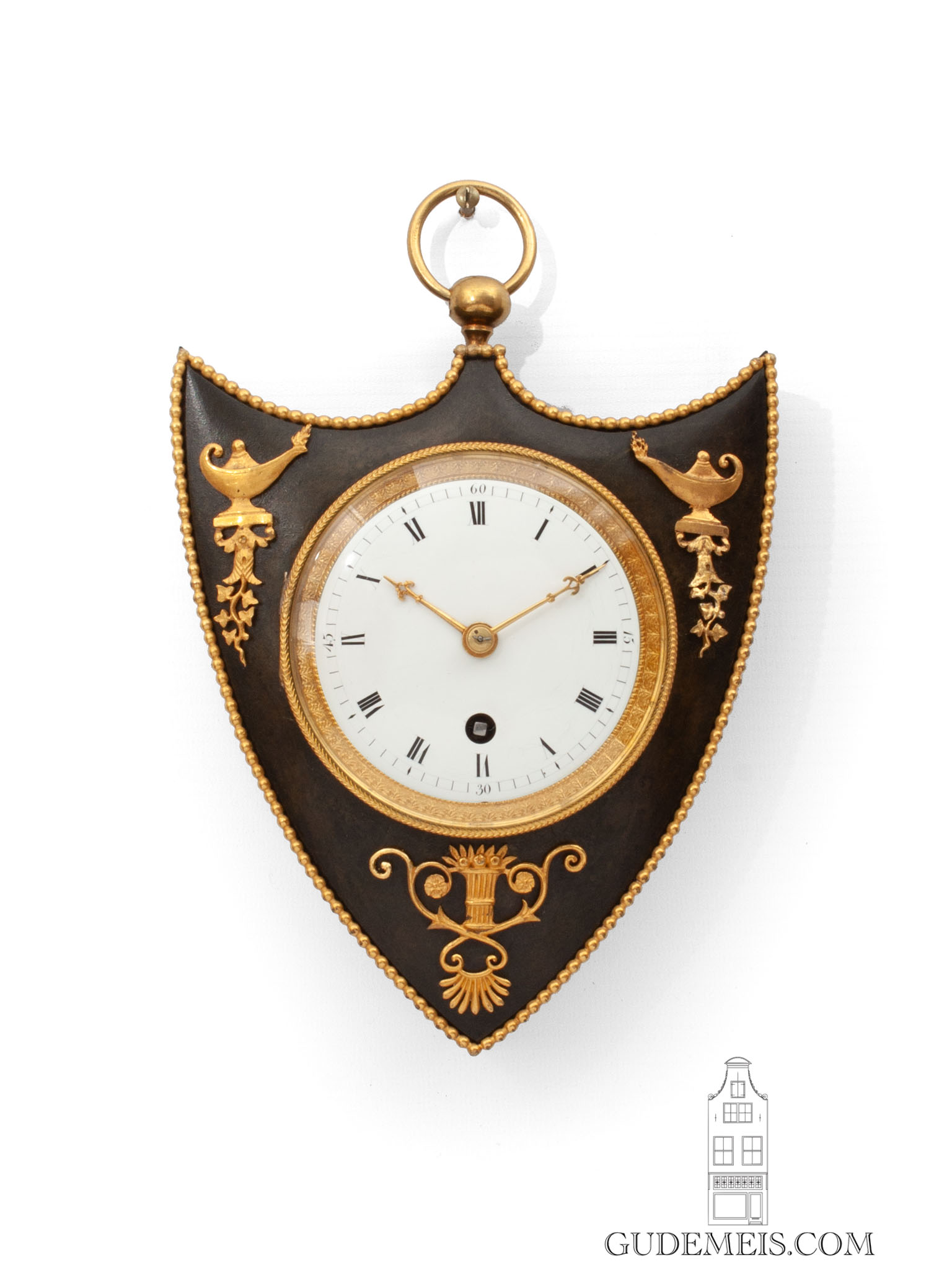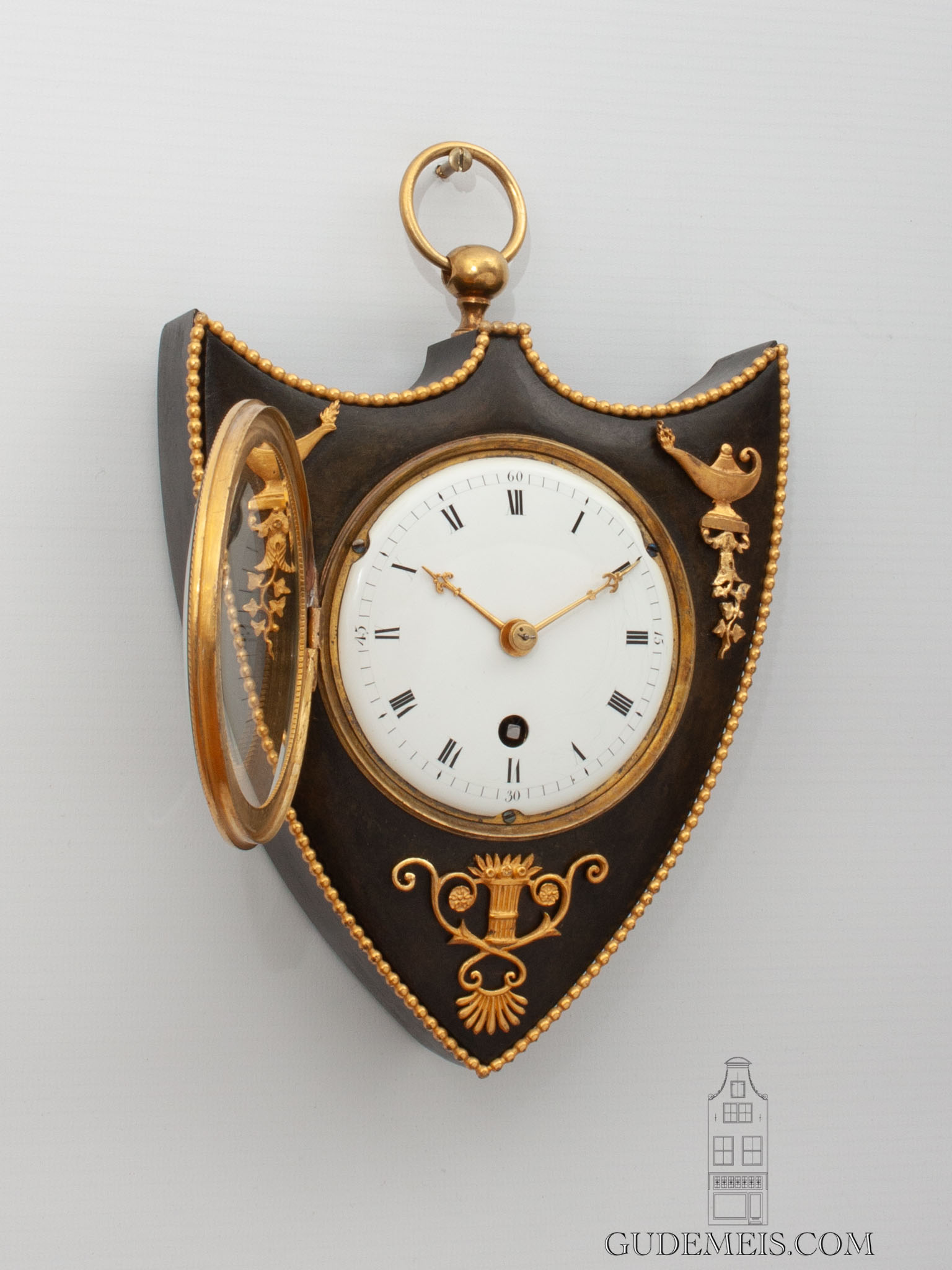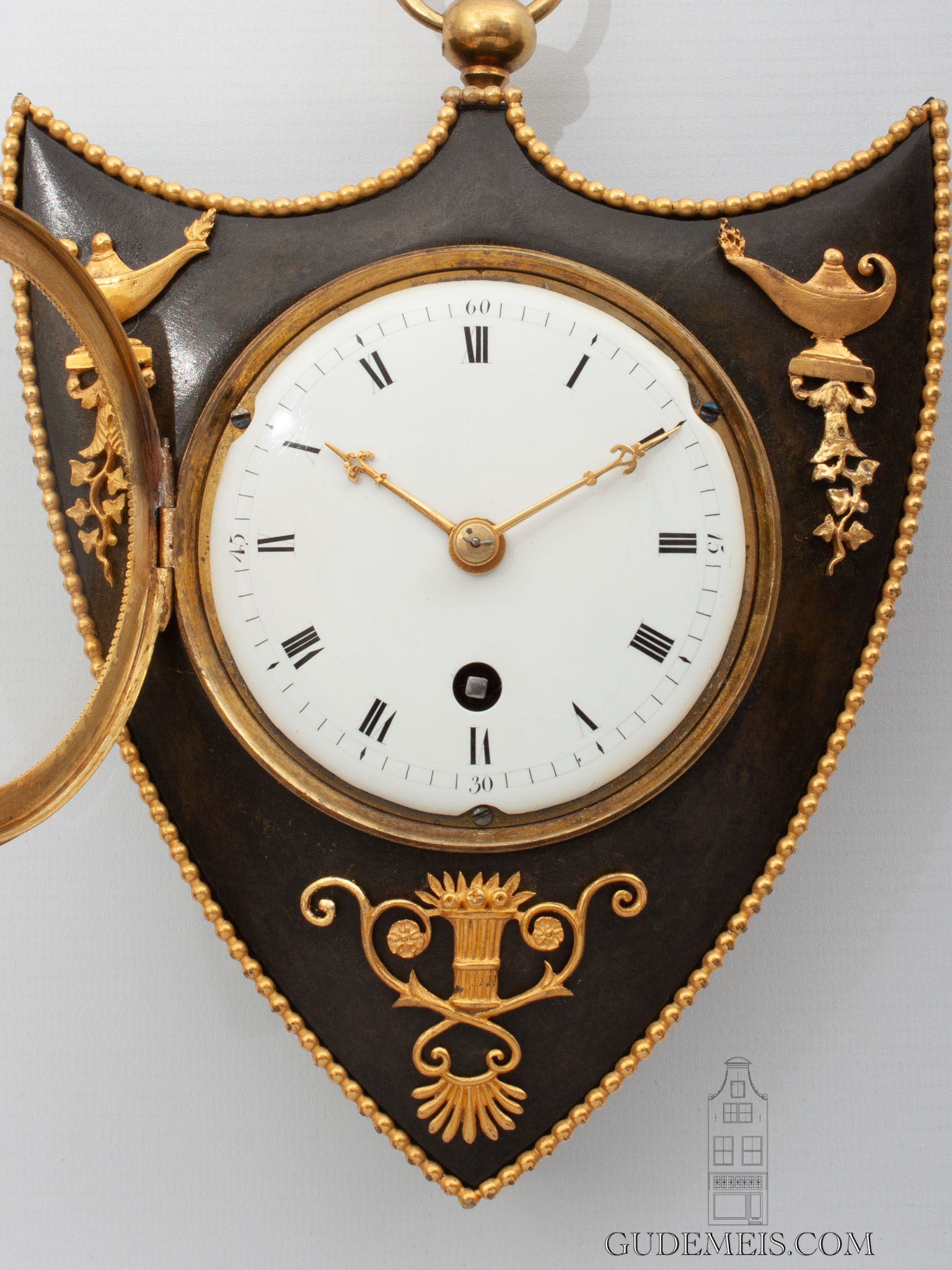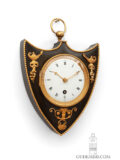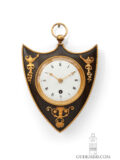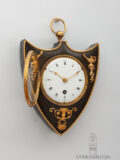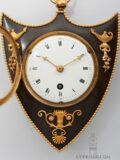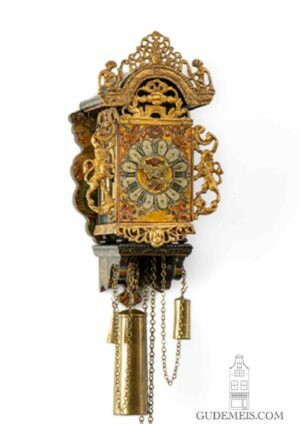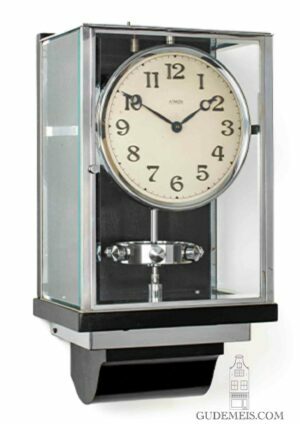A small French Empire gilt and patinated bronze cartel clock, circa 1800.
Description
Cartel
French wall clocks that are more or less an ornament are called ‘cartel’. In the Louis XV or rococo period these clocks have C- and S- scrolls. In the subsequent Louis XVI period this type of clock is often adorned with classical elements like the ‘urn’, ‘garland’ and ‘lion mask’. In the Empire period this type of wall clock is much less common. Most cartels of this period are annular shaped and are also called ‘Oeuil du Boeuf’ or Bulls’eye. Only very few have this elegant ‘shield shape’. Therefore this small clock isn’t only attractive but also very rare.
The dial
The 8-cm enamel dial has Roman numerals and Arabic numerals for the quarter indication. The engraved and pierced hands are made of gilt brass.
Cartel d’alcove
The typical French movement is driven by a spring barrel and a duration of eight days. This means that the clock needs to be wound once a week. It is being regulated by anchor escapement in combination with a silk suspended pendulum. It is likely that this clock was meant for the sleeping quarters because of its small dimensions and the omission of striking work. These bedroom clocks are called ‘cartel d’alcove’.
bronze
The shield shaped case is made of patinated bronze and is surmounted by a suspension ring. It is lined with a gilt pearl rim and the case itself has classical gilt mounts.

